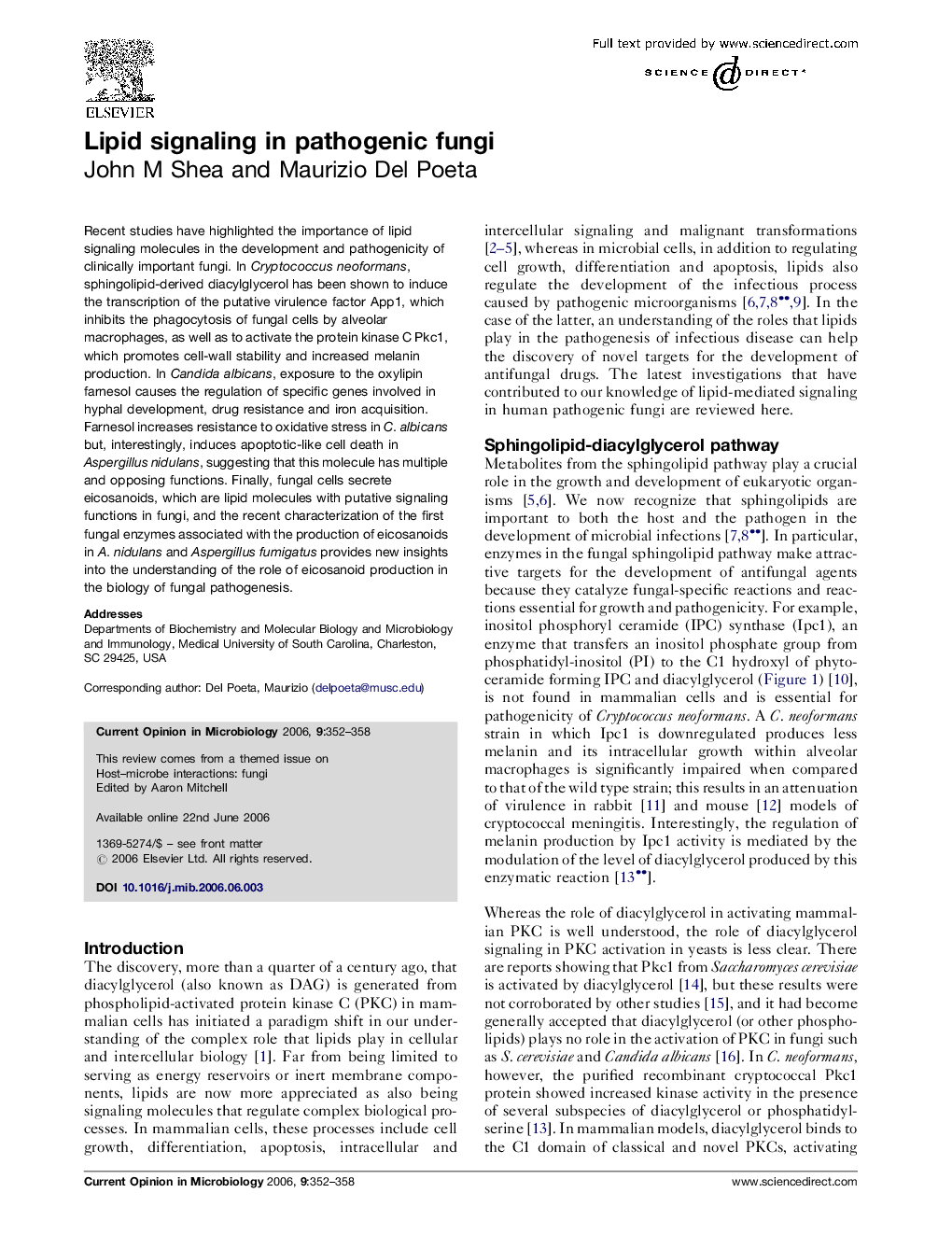| Article ID | Journal | Published Year | Pages | File Type |
|---|---|---|---|---|
| 3399713 | Current Opinion in Microbiology | 2006 | 7 Pages |
Recent studies have highlighted the importance of lipid signaling molecules in the development and pathogenicity of clinically important fungi. In Cryptococcus neoformans, sphingolipid-derived diacylglycerol has been shown to induce the transcription of the putative virulence factor App1, which inhibits the phagocytosis of fungal cells by alveolar macrophages, as well as to activate the protein kinase C Pkc1, which promotes cell-wall stability and increased melanin production. In Candida albicans, exposure to the oxylipin farnesol causes the regulation of specific genes involved in hyphal development, drug resistance and iron acquisition. Farnesol increases resistance to oxidative stress in C. albicans but, interestingly, induces apoptotic-like cell death in Aspergillus nidulans, suggesting that this molecule has multiple and opposing functions. Finally, fungal cells secrete eicosanoids, which are lipid molecules with putative signaling functions in fungi, and the recent characterization of the first fungal enzymes associated with the production of eicosanoids in A. nidulans and Aspergillus fumigatus provides new insights into the understanding of the role of eicosanoid production in the biology of fungal pathogenesis.
